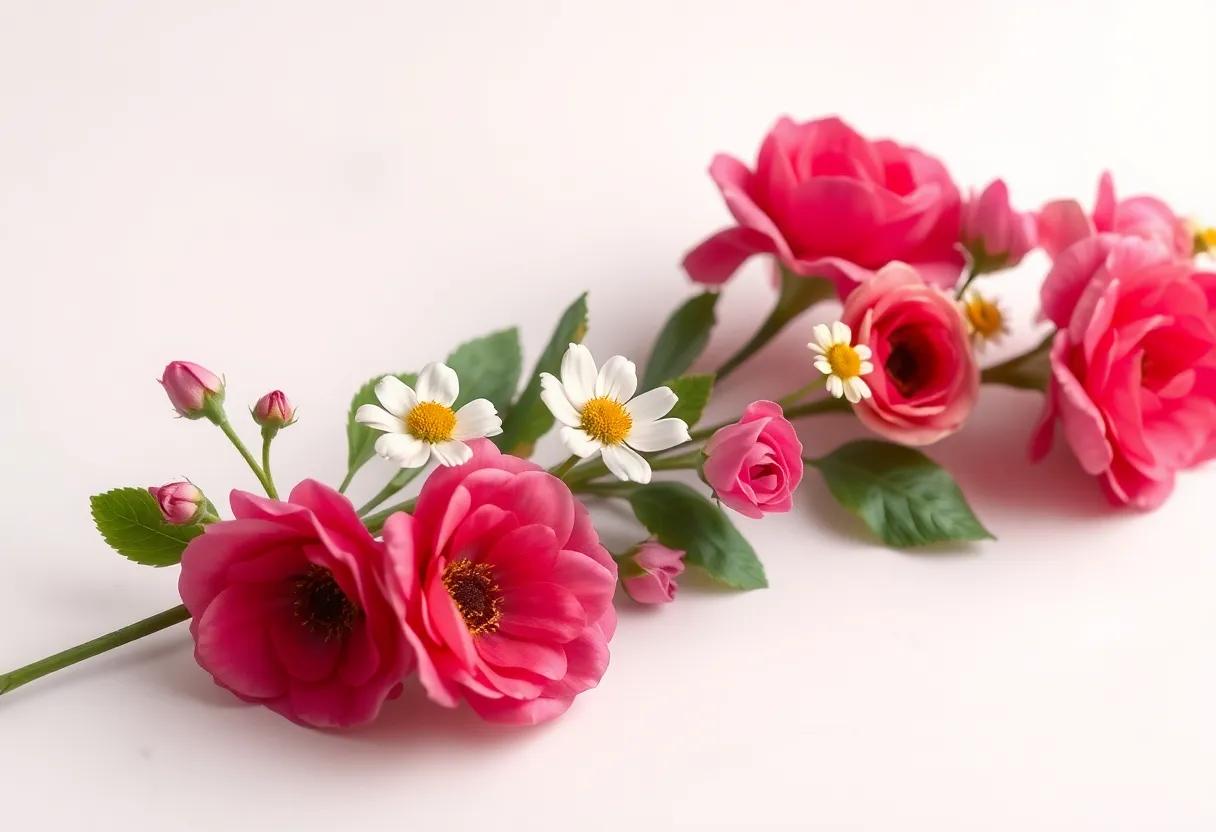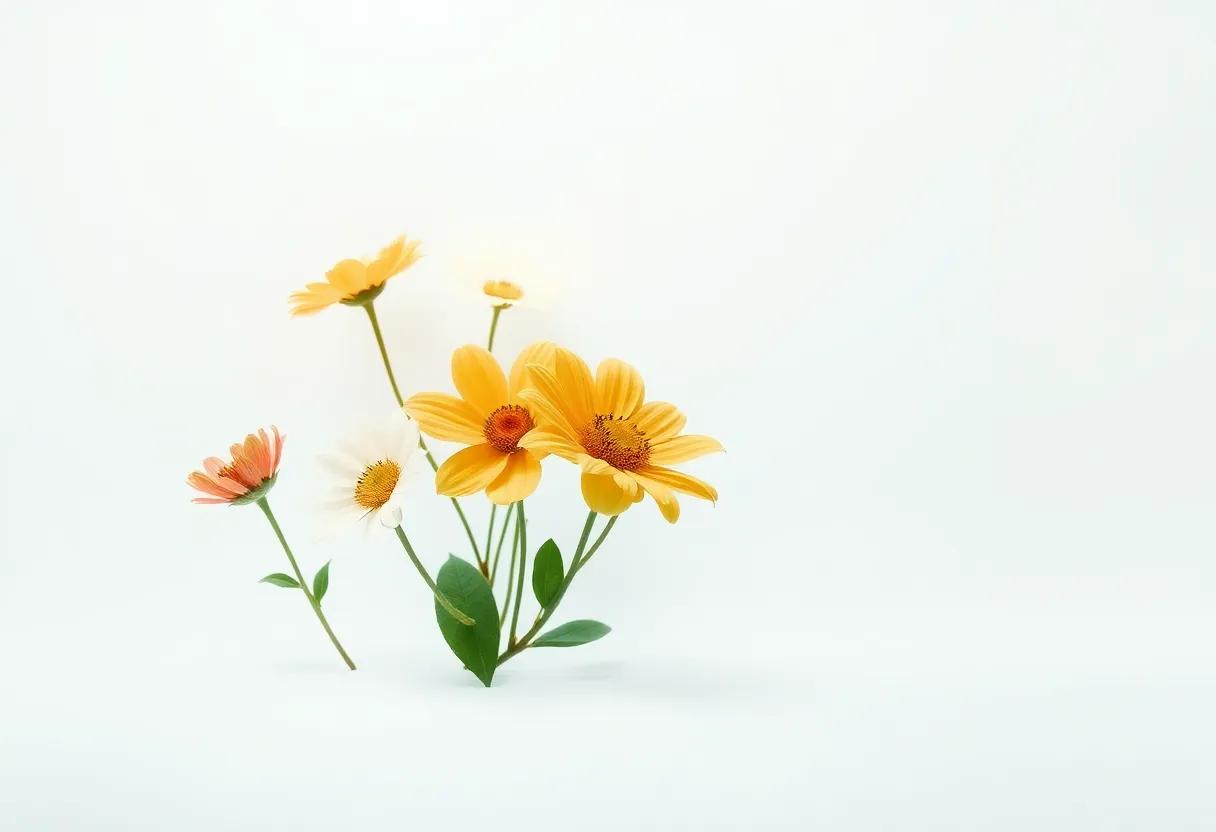In a literary landscape often crowded with tales of struggle and triumph, Hope for the Flowers emerges as a quietly profound allegory about growth, change, and the pursuit of meaning. Unfolding Change: A Reflective Review of Hope for the Flowers invites readers to look beyond the simple narrative of caterpillars and butterflies, exploring the deeper metamorphoses whispered between its lines. This review unfolds the layers of symbolism and introspection woven throughout the story, offering a thoughtful examination of how hope and transformation intertwine within this timeless fable.
The Journey of Self-Discovery and Growth Explored Through Hope for the flowers’ Narrative

Within Hope for the Flowers, the metamorphosis of the characters elegantly mirrors the profound human quest for purpose and identity. The narrative uses the journey of the caterpillars not merely as a biological process, but as a symbolic passage toward self-awareness and courage. As thay ascend the pillar in search of meaning, the story subtly evokes our personal struggles with conformity and societal expectations-setting the stage for a bold leap into the unknown. This powerful allegory encourages readers to embrace vulnerability, underscoring that true growth often demands leaving behind familiar comforts to explore untapped potentials.
The story’s layers unravel through key themes that resonate deeply with anyone experiencing change or introspection.Among the most compelling elements are:
- Patience in Evolution: Highlighting that growth is not instantaneous but a continual process.
- Self-Determination: Emphasizing the value of following one’s intrinsic motivations rather than external pressures.
- Transformation Risks: Acknowledging that true transformation entails uncertainty and potential sacrifice.
To visualize this transformative journey, consider the following simple comparison of the main stages:
| Stage | Emotional State | Symbolic Meaning |
|---|---|---|
| Caterpillar | Curiosity and Restlessness | Yearning for change |
| Chrysalis | Isolation and Uncertainty | Inner transformation |
| Butterfly | Freedom and Fulfillment | Self-realization and growth |
Symbolism and Metaphor Unveiled in the Storytelling of Hope for the Flowers

The narrative intricately weaves symbolism throughout its fabric, transforming seemingly simple elements into profound metaphors for life’s journey and personal evolution. The caterpillars’ climb, as an example, transcends physical ascent, representing the struggle each individual faces when seeking purpose beyond societal expectations. Their transformation into butterflies is not merely a biological process but a powerful emblem of liberation and self-actualization. This metamorphosis challenges readers to reconsider the nature of success and happiness, inviting reflection on what it means to truly “fly” in one’s own life.
Symbols in the story act as touchstones for universal experiences:
- The Tower: A metaphor for ambitions and societal ladder-climbing, often portrayed as restrictive rather than fulfilling.
- The cocoon: Represents introspection and the necessary solitude before rebirth or change.
- The Flight: Symbolizes freedom, self-discovery, and the embrace of one’s authentic self.
| Element | Symbolism | Metaphorical Meaning |
|---|---|---|
| Caterpillar’s Struggle | Continuous climbing | Life’s relentless pursuit of achievement |
| Colorful Wings | Butterfly transformation | Embracing individuality & freedom |
| Empty Tower | Fruitless ambition | Realization of hollow success |
The Impact of Hope and Perseverance Themes on Readers’ Emotional and Mental Perspectives

Readers often find themselves deeply moved by the intertwined themes of hope and perseverance, which serve as emotional anchors throughout Hope for the Flowers. These themes ignite a spark of resilience, encouraging audiences to confront personal challenges with renewed optimism. The narrative’s subtle yet powerful symbolism invites introspection, fostering an environment where readers can safely explore their vulnerabilities and aspirations. This emotional journey not only enhances empathy but also reshapes mental outlooks, nurturing a belief that transformation-even in the face of adversity-is absolutely possible and within reach.
Key emotional and mental shifts experienced by readers include:
- Increased motivation to persist through hardships
- Heightened sense of self-worth and potential
- Renewed faith in personal growth and change
- Deepened understanding of patience as a form of strength
| Theme | Emotional Effect | Mental Impact |
|---|---|---|
| Hope | Inspires optimism | Encourages future-focused thinking |
| Perseverance | Fosters emotional resilience | Strengthens problem-solving mindset |
Character Development as a Reflection of Personal Transformation and Inner Strength

At the heart of the narrative is a profound journey where characters evolve beyond mere story arcs, embodying the core essence of personal growth. The protagonists’ metamorphosis showcases the intrinsic link between self-discovery and resilience, highlighting how overcoming adversity reveals the strength residing within.as they ascend from the cocoon of doubt and fear, their transformation becomes a powerful symbol of hope, illustrating that true change is both an inward battle and a blossoming outward expression.
this unfolding development can be explored through several key facets:
- Embracing vulnerability: Characters confront their limitations, making their fragility a source of authenticity rather than weakness.
- Breaking free from conformity: The courage to challenge societal expectations catalyzes genuine self-realization.
- Persistence in adversity: Continual striving despite obstacles exemplifies inner fortitude and commitment to growth.
| Stage | Character Shift | Inner Strength Displayed |
|---|---|---|
| Emergence | Questioning the status quo | Courage to seek truth |
| Growth | Letting go of comfort | Resilience through challenge |
| Ascendance | Embracing identity | Empowerment by self-awareness |
How the Book’s Visual Imagery Enhances the Emotional Depth and Message of Hope for the Flowers

The book’s visual imagery serves as a vital bridge between its poetic narrative and the reader’s emotional experience. Through lush, vivid illustrations, each stage of the protagonist’s journey is brought to life with a clarity that words alone might not convey.The delicate depiction of the caterpillar’s metamorphosis into a butterfly mirrors the fragility and resilience inherent in transformation, inviting readers to witness the beauty that arises from perseverance. These images tend to evoke a quiet introspection, allowing the visual elements to work harmoniously with the text, deepening the reader’s connection to themes of growth, change, and the realization of one’s true potential.
Visual elements that stand out include:
- Soft gradients of color representing emotional shifts
- Symbolic use of light and shadow to highlight moments of despair and hope
- Micro-details in nature that underscore life’s intricacies and interconnectedness
through such artistry, the illustrations do more than complement the story; they expand its emotional landscape, transforming abstract ideas into tangible moments. The hopeful hues that brighten as the narrative progresses subtly reinforce the uplifting message, inspiring readers to embrace change as a path toward fulfillment.
Analyzing the Balance Between Simplicity and Profound Wisdom in the Book’s Language and Style
The language of Hope for the flowers masterfully walks a tightrope between simplicity and depth, creating a narrative that is accessible yet richly philosophical. The prose feels almost conversational, inviting readers of all ages to embark on a journey of self-discovery without being bogged down by complex jargon. This clarity doesn’t dilute the message but rather amplifies it, allowing profound insights to resonate effortlessly. By employing straightforward metaphors and analogies, the book achieves a timeless quality - a gentle reminder that wisdom doesn’t always need to be complicated to be transformative.
Moreover, the style subtly layers its teachings, encouraging multiple readings and reflections. The text acts like a mirror, reflecting the reader’s evolving understanding back at them through:
- Simple storytelling: Parables and characters that embody life’s lessons.
- Concise language: Every word is purposeful, enhancing emotional and intellectual engagement.
- Thought-provoking pauses: Moments within the prose that invite contemplation beyond the page.
Such a balanced approach not only ensures the book’s message remains accessible but also sparks profound introspection, making the stylistic choices as transformative as the narrative itself.
The Role of Nature and the Butterfly Metaphor in Illustrating Life’s Challenges and Rewards
In Hope for the Flowers, nature is not merely a backdrop but a living canvas where life’s intricate processes-growth, struggle, and renewal-are vividly dramatized. The butterfly metaphor elegantly encapsulates these themes, symbolizing transformation in its purest form. From caterpillar to chrysalis to butterfly, this journey mirrors the universal human experience of encountering challenges and emerging stronger. The natural cycle portrayed reminds us that patience and perseverance,like the slow unfurling of delicate wings,are essential for achieving true growth and fulfillment.
Throughout the narrative, the butterfly’s metamorphosis is intertwined with lessons about resilience, choice, and self-discovery. Key moments in the story highlight:
- Embracing discomfort as a catalyst for profound change;
- Letting go of old identities to embrace new potentials;
- Trusting in natural timing, honoring the pace of personal evolution;
- Recognizing beauty in the struggle and reward of transformation.
| Stage | Symbolism | Life Parallel |
|---|---|---|
| Caterpillar | Curiosity and Growth | Early learning and development |
| Chrysalis | Transformation and Vulnerability | Periods of change and uncertainty |
| Butterfly | Freedom and Fulfillment | Self-actualization and reward |
Educational Value and Suitability of Hope for the Flowers for Different Age Groups and Settings
Hope for the Flowers resonates with readers across a spectrum of ages, making it a versatile piece in educational environments. For younger children, the book’s vivid imagery and simple narrative spark imagination while introducing foundational themes of growth, change, and self-discovery. Its allegorical approach encourages empathy and emotional intelligence, fostering discussions on patience and resilience. In middle and high school settings, the book serves as an insightful tool to explore deeper philosophical questions about purpose, ambition, and societal roles. Teachers can leverage it to dissect character development, symbolism, and thematic elements, promoting critical thinking in literature and life lessons alike.
When considering different contexts, Hope for the Flowers adapts well from classroom settings to group therapy or personal reflection spaces. Below is a brief overview of its educational suitability across age groups and settings:
| Age Group | Educational Focus | Ideal Settings |
|---|---|---|
| Children (6-10) |
|
elementary classrooms, storytime groups |
| Adolescents (11-17) |
|
Middle/high school classes, literary clubs |
| Adults |
|
Book clubs, therapy sessions, workshops |
Practical Life Lessons Drawn from Hope for the Flowers for Personal and Professional Growth
The journey of the butterflies in Hope for the Flowers offers profound lessons on patience and self-discovery that resonate deeply within both personal and professional realms. At its core, the narrative encourages us to embrace change rather than resist it, reminding us that growth often requires discomfort and courage. When faced with challenging transitions, whether climbing the corporate ladder or navigating life’s uncertainties, the story underlines the importance of trusting the process and recognizing that transformation unfolds at its own pace.
Additionally, the tale advocates for authentic leadership and collaboration, highlighting that success does not hinge solely on competition, but on mutual support and understanding. This is particularly significant in team environments where fostering a culture of empathy can lead to more innovative and cohesive results. below is a speedy reference of key takeaways adapted for everyday submission:
| Lesson | Practical Application |
|---|---|
| Embrace Uncertainty | Adapt to new roles with versatility and openness. |
| Value Inner Growth | Focus on personal skills alongside external achievements. |
| Collaborate Over Compete | Build supportive networks rather than rivalries. |
| Practice Patience | Allow time for ideas and projects to mature naturally. |
Comparative Insights Into Hope for the flowers Versus Other Inspirational Literary Works
Hope for the Flowers distinguishes itself in the realm of inspirational literature through its unique blend of allegory and simplicity. Unlike works such as The Alchemist or jonathan Livingston Seagull, which often navigate mystical or metaphysical landscapes, this narrative grounds its transformational journey in the tangible world of nature, specifically through the life cycle of caterpillars and butterflies. This metaphorical approach resonates universally, making profound themes of growth, self-discovery, and resilience accessible to readers of all ages. The story’s straightforward prose contrasts with more elaborate philosophical texts, yet its emotional depth leaves a lasting imprint, offering hope and encouragement without overwhelming complexity.
The comparative framework below highlights key elements that set Hope for the Flowers apart and what common threads it shares with other beloved inspirational classics:
| Aspect | Hope for the Flowers | The Alchemist | Jonathan Livingston Seagull |
|---|---|---|---|
| Primary Theme | Personal transformation through nature’s cycle | spiritual quest and destiny | Freedom and individuality |
| Narrative Style | Simple, allegorical storytelling | Philosophical and symbolic | Poetic and parabolic |
| Target Audience | All ages, especially young readers | Adult and young adult readers | All ages |
| Core Message | Transform through self-awareness and patience | Follow your personal legend | Break boundaries and embrace authenticity |
- Simplicity: Strips down complex ideas to their emotional essence.
- Relatability: Uses natural life cycles to mirror human growth.
- Inspiration: Encourages readers to take risks in pursuit of their true selves.
- Accessibility: Invites even younger audiences into philosophical reflection.
Recommendations for Readers Seeking Motivational and Reflective Literature Experiences
For those drawn to narratives that ignite both motivation and introspection, hope for the Flowers serves as a beacon of transformative wisdom. Readers eager to explore themes of personal growth and resilience will find the story’s allegorical wings perfectly suited to guide their own journeys. The book’s simplicity belies profound truths, making it an ideal companion for quiet reflection or a boost of encouragement during life’s crossroads. To enhance this literary experience, consider pairing the reading with journaling exercises or group discussions that unravel the layers of meaning embedded in the story.
- Embrace the allegory: Allow yourself time to interpret the symbolic imagery and relate it to your own aspirations.
- Set intentions: Use the narrative’s themes to establish personal goals or affirmations inspired by the characters’ transformations.
- Engage with others: Join reading circles or forums that focus on reflective literature to deepen your understanding and emotional connection.
| Reader Type | Recommended Approach | Ideal Setting |
|---|---|---|
| Reflective Thinkers | Note-taking and meditation breaks | Quiet nook or nature spot |
| Motivated Achievers | Goal mapping inspired by chapters | Workspace or planning sessions |
| Group Explorers | Facilitated discussions and sharing circles | Book clubs or online forums |
Potential Adaptations and Creative Interpretations Inspired by Hope for the Flowers’ Themes
The timeless allegory illustrated in Hope for the Flowers offers a fertile ground for adaptations that transcend its original literary form. Imagine a modern graphic novel series where the butterflies’ metamorphosis becomes a vibrant exploration of urban life’s complexities, or an animated short film capturing the delicate balance between conformity and self-discovery in a kaleidoscope of colors and motion. Such creative reinterpretations could harness multimedia’s dynamic potential, inviting audiences to experience the story’s themes-courage, growth, and transformation-in refreshing, immersive ways. Interactive digital experiences, as an example, might allow users to guide a caterpillar’s journey, making choices that reflect the challenges of evolving identity and purpose, effectively merging storytelling with self-reflection.
Moreover, the narrative’s philosophical core could inspire educational programs and workshops centered on personal development. Below is a simple comparative chart showcasing potential adaptation formats tailored to various audiences:
| format | Target Audience | Unique Element |
|---|---|---|
| Graphic Novel | Young Adults | Visual symbolism and urban metaphors |
| Animated Film | Family Viewers | Colorful metaphors, music, and motion |
| Interactive App | Teens & Adults | Choice-driven narrative paths |
| Personal Growth Workshop | Educators & Learners | Reflective exercises aligned with themes |
These imaginative avenues for reinterpretation not only preserve the essence of hope for the Flowers but also expand its reach, encouraging deeper connection across forms and mediums. By embracing such potential, creators can foster renewed engagement with the story’s enduring message of hope and transformation in a world that constantly demands evolution.
A Closer Look at Trina Paulus and Her Motivations Behind Writing Hope for the Flowers
Trina Paulus was not just an author; she was a visionary who channeled her profound experiences into crafting Hope for the Flowers. Dissatisfied with the conventional narratives about success and happiness, she sought to express a deeper truth about human transformation and self-discovery. Having experienced personal upheavals and a search for meaning, Paulus used the allegorical journey of the two caterpillars to mirror the universal quest for purpose beyond societal expectations. This novel was her gentle rebellion against the rat race-a call to look within and embrace growth,no matter how daunting the change may seem.
At the heart of Paulus’s motivation lies a desire to highlight three core themes that resonate powerfully with readers of all ages:
- Authentic Transformation: Emphasizing the bravery it takes to shed old skins and become one’s true self.
- Individual Choice: Encouraging people to question the paths laid out for them and to follow their own wings.
- Hope and Renewal: Celebrating the possibilities that arise after embracing uncertainty.
Through these motifs, her message transcends a simple story-it becomes a roadmap for navigating life’s inevitable metamorphoses.
| Motivation | Reflection in the Book |
|---|---|
| Personal Growth | Caterpillars’ journey symbolizes self-discovery |
| Breaking Free | Rejecting conformity and societal expectations |
| Hope | Transformation leads to a new beginning |
In closing, Hope for the Flowers invites readers on a gentle yet profound journey of growth and self-discovery, wrapped in the simple elegance of its storytelling. Through its metaphor-rich narrative, it encourages reflection on the paths we choose and the transformations we undergo. This review has aimed to unfold the layers beneath its charming surface, revealing a timeless message that resonates quietly long after the last page is turned. Whether you seek inspiration or introspection, this book offers a peaceful space to consider what it truly means to hope, change, and ultimately, to soar.









